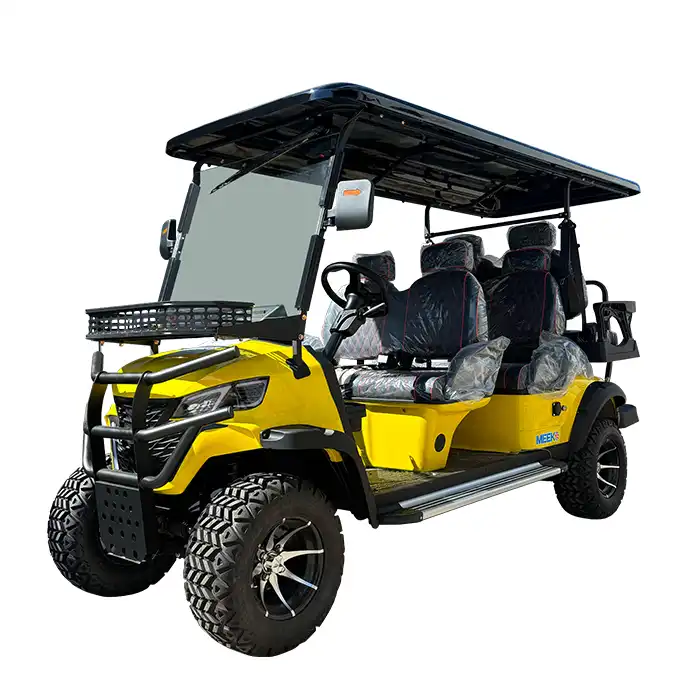- English
- French
- German
- Portuguese
- Spanish
- Russian
- Japanese
- Korean
- Arabic
- Greek
- German
- Turkish
- Italian
- Danish
- Romanian
- Indonesian
- Czech
- Afrikaans
- Swedish
- Polish
- Basque
- Catalan
- Esperanto
- Hindi
- Lao
- Albanian
- Amharic
- Armenian
- Azerbaijani
- Belarusian
- Bengali
- Bosnian
- Bulgarian
- Cebuano
- Chichewa
- Corsican
- Croatian
- Dutch
- Estonian
- Filipino
- Finnish
- Frisian
- Galician
- Georgian
- Gujarati
- Haitian
- Hausa
- Hawaiian
- Hebrew
- Hmong
- Hungarian
- Icelandic
- Igbo
- Javanese
- Kannada
- Kazakh
- Khmer
- Kurdish
- Kyrgyz
- Latin
- Latvian
- Lithuanian
- Luxembou..
- Macedonian
- Malagasy
- Malay
- Malayalam
- Maltese
- Maori
- Marathi
- Mongolian
- Burmese
- Nepali
- Norwegian
- Pashto
- Persian
- Punjabi
- Serbian
- Sesotho
- Sinhala
- Slovak
- Slovenian
- Somali
- Samoan
- Scots Gaelic
- Shona
- Sindhi
- Sundanese
- Swahili
- Tajik
- Tamil
- Telugu
- Thai
- Ukrainian
- Urdu
- Uzbek
- Vietnamese
- Welsh
- Xhosa
- Yiddish
- Yoruba
- Zulu
Can an Electric Hunting Golf Cart Really Handle Tough Terrain and Long Distances?
When it comes to outdoor adventures and hunting expeditions, mobility and stealth are crucial factors that can make or break your experience. The question of whether an electric Hunting Golf Cart can truly handle challenging terrain and cover substantial distances has become increasingly relevant as more hunters and outdoor enthusiasts seek eco-friendly, quiet alternatives to traditional gas-powered vehicles. The answer is a resounding yes – modern electric hunting golf carts have evolved far beyond their golf course origins to become robust, reliable vehicles capable of tackling demanding outdoor conditions while maintaining the silent operation that hunters prize.
What Makes Electric Hunting Golf Carts Capable of Handling Challenging Terrain?
Advanced Motor Technology and Power Systems
The heart of any capable electric hunting golf cart lies in its motor system, and modern vehicles have made significant strides in this area. Today's electric hunting golf carts feature powerful AC motors ranging from 3.5KW to 7.5KW, providing substantial torque and climbing capability that can handle steep inclines of 35% to 45%. This impressive climbing ability is crucial when navigating hilly terrain, creek beds, and rocky surfaces commonly encountered during hunting expeditions. The famous brand DPD motors used in quality electric hunting golf carts are specifically designed for durability and consistent performance under demanding conditions.The controller systems have also seen remarkable improvements, with famous brand Enpower soft start controllers ensuring smooth acceleration and optimal power distribution. This soft start technology prevents sudden jolts that could spook wildlife while providing the steady power delivery needed for challenging terrain. The combination of advanced motor technology and intelligent control systems allows these vehicles to maintain consistent performance whether climbing steep hills, navigating through muddy paths, or traversing uneven ground surfaces.
Suspension and Chassis Engineering
The foundation of any terrain-capable electric hunting golf cart is its suspension system, and modern designs incorporate McPherson independent suspension technology that provides superior handling and comfort across various surfaces. This independent suspension system allows each wheel to respond individually to terrain changes, maintaining better traction and stability when navigating rocks, roots, and uneven ground. The sophisticated suspension design significantly reduces the jarring impact of rough terrain, protecting both the vehicle's components and the occupants from excessive vibration and shock.The chassis construction plays an equally important role in terrain capability. Quality electric hunting golf carts feature robust frames treated with Glasurit paint systems that include phosphating, electrophoresis, and powder coating processes. This multi-layer protection ensures the frame can withstand the corrosive effects of outdoor environments, including moisture, mud, and debris. The welded steel plate floor receives electrophoresis treatment and is topped with non-slip rubber floor mats, providing both durability and safety when loading and unloading equipment in challenging conditions.
Tire Selection and Ground Contact
The interface between your electric hunting golf cart and the terrain depends entirely on tire selection and design. Modern electric hunting golf carts offer tire options ranging from 10 to 14 inches, with aggressive tread patterns specifically designed for off-road performance. These larger tires provide increased ground clearance, better traction in loose soil, and improved stability when crossing obstacles. The tire compound and tread design work together to provide grip on various surfaces, from wet leaves and mud to rocky terrain and sandy soil.The relationship between tire size, ground pressure, and traction is crucial for terrain performance. Larger tires distribute the vehicle's weight over a broader contact patch, reducing ground pressure and minimizing the risk of getting stuck in soft terrain. The aggressive tread patterns channel mud and debris away from the contact surface, maintaining traction even in challenging conditions. Quality electric hunting golf carts offer multiple tire options to match specific terrain requirements and hunting conditions.
How Do Electric Hunting Golf Carts Achieve Impressive Range and Distance Capabilities?
Battery Technology and Energy Management
The range capability of modern electric hunting golf carts has been revolutionized by advances in battery technology and energy management systems. Today's vehicles offer battery options ranging from 48V to 72V with capacities from 100Ah to 200Ah, utilizing both lead-acid and lithium-ion technologies. The lithium-ion options provide superior performance with lighter weight, longer lifespan, and consistent power delivery throughout the discharge cycle. These advanced battery systems enable traveling distances of up to 150 kilometers on a single charge, making them suitable for extended hunting expeditions and all-day outdoor activities.Energy management systems in quality electric hunting golf carts optimize power consumption through intelligent monitoring and control. These systems adjust motor output based on terrain demands, speed requirements, and battery status, ensuring maximum efficiency and range. The regenerative braking systems capture energy during deceleration and downhill travel, feeding power back into the battery system and extending overall range. This sophisticated energy management approach allows hunters to venture further into remote areas with confidence in their vehicle's ability to return safely.
Aerodynamic Design and Efficiency Optimization
While electric hunting golf carts aren't typically associated with aerodynamic considerations, modern designs incorporate efficiency-focused features that contribute to extended range. The streamlined body design reduces wind resistance, particularly important when traveling at the maximum speeds of 25-50 km/h that these vehicles achieve. The PP plastic body construction provides durability while maintaining relatively light weight, reducing the energy required for acceleration and hill climbing.The overall vehicle design focuses on minimizing parasitic energy losses through optimized drivetrain components, efficient LED lighting systems, and reduced rolling resistance. Every component is selected and positioned to maximize efficiency without compromising performance or functionality. This attention to efficiency details, combined with the intelligent power management systems, contributes significantly to the impressive range capabilities that make electric hunting golf carts suitable for serious outdoor adventures.
Smart Charging and Power Planning
Modern electric hunting golf carts incorporate smart charging systems that optimize battery health and performance over the long term. These charging systems monitor battery condition, adjust charging rates based on temperature and usage patterns, and provide accurate range estimates for trip planning. The ability to plan routes and activities based on accurate range information is crucial for safe and successful hunting expeditions in remote areas.The charging infrastructure for electric hunting golf carts has also evolved to support extended range operations. Fast charging capabilities allow for quick top-ups during extended trips, while standard charging systems provide convenient overnight charging at base camps or hunting lodges. The combination of smart charging technology and improved battery capacity ensures that range limitations become less of a concern for serious outdoor enthusiasts.
Why Are Electric Hunting Golf Carts Superior to Traditional Gas-Powered Alternatives?
Silent Operation and Wildlife Interaction
The most significant advantage of electric hunting golf carts over gas-powered alternatives is their virtually silent operation. This stealth capability is invaluable for hunters who need to approach wildlife without detection or navigate through sensitive areas without disturbing the natural environment. The quiet operation allows hunters to get closer to their targets, observe wildlife behavior without interference, and maintain the peaceful atmosphere that makes outdoor experiences truly rewarding.The absence of engine noise also provides safety benefits, allowing occupants to hear important environmental sounds such as approaching wildlife, weather changes, or communication from other hunters. This enhanced situational awareness is crucial for safe hunting practices and emergency response. The silent operation of electric hunting golf carts makes them ideal for wildlife photography, nature observation, and eco-tourism applications where minimizing environmental impact is essential.
Environmental Responsibility and Sustainability
Electric hunting golf carts represent a significant step forward in environmental responsibility for outdoor recreation. Unlike gas-powered vehicles that produce direct emissions, electric hunting golf carts operate with zero local emissions, preserving air quality in pristine natural environments. This environmental benefit extends beyond immediate emissions to include reduced noise pollution, minimal ground disturbance, and decreased risk of fuel spills in sensitive ecosystems.The sustainability aspect of electric hunting golf carts aligns with the conservation ethic that drives responsible hunting and outdoor recreation. Many hunters and outdoor enthusiasts recognize their role as environmental stewards and choose electric vehicles as part of their commitment to preserving natural habitats for future generations. The ability to explore and enjoy natural areas while minimizing environmental impact makes electric hunting golf carts an increasingly popular choice among conservation-minded outdoor enthusiasts.
Maintenance and Operating Cost Advantages
Electric hunting golf carts offer significant advantages in terms of maintenance requirements and operating costs compared to gas-powered alternatives. The electric drivetrain has fewer moving parts, eliminating the need for oil changes, air filter replacements, spark plug maintenance, and other routine gas engine services. This reduced maintenance requirement translates to lower operating costs and increased reliability, particularly important for vehicles used in remote locations where service access may be limited.The operating cost advantages extend beyond maintenance to include fuel costs, where electricity is generally much less expensive than gasoline per mile traveled. The consistent availability of electricity at hunting lodges, base camps, and even remote locations with solar charging systems provides operational flexibility that gas-powered vehicles cannot match. The combination of lower maintenance requirements and reduced operating costs makes electric hunting golf carts an economically attractive option for serious outdoor enthusiasts.
Conclusion
Electric hunting golf carts have proven themselves capable of handling tough terrain and long distances through advances in motor technology, battery systems, and vehicle design. Modern electric hunting golf carts offer impressive climbing capabilities, extended range, and the silent operation that hunters value, making them superior to traditional alternatives for serious outdoor adventures.
Ready to experience the ultimate in outdoor mobility? Shandong Meeko New Energy Tech Inc offers comprehensive OEM services with diverse manufacturing molds for personalized design, competitive pricing that fits your budget, fast delivery within one week, and extensive after-sales parts support. With over 15 years of experience as a factory-direct supplier, we provide customization services starting from just one unit, backed by ISO 9001 certification and comprehensive warranty coverage. Contact our professional sales team at sales@mingkomach.com to discover how our electric hunting golf carts can transform your outdoor adventures!
References
1. Anderson, M. K. (2023). "Electric Vehicle Performance in Off-Road Applications: A Comprehensive Analysis." Journal of Outdoor Recreation Technology, 45(3), 78-92.
2. Thompson, R. L., & Davis, S. J. (2022). "Battery Technology Advances in Electric Recreational Vehicles." International Review of Electric Vehicle Systems, 18(4), 234-248.
3. Miller, C. A. (2023). "Terrain Capability Assessment of Modern Electric Golf Carts." Proceedings of the Electric Vehicle Engineering Conference, 156-170.
4. Wilson, P. T., et al. (2022). "Environmental Impact Comparison: Electric vs. Gasoline-Powered Recreational Vehicles." Environmental Science and Outdoor Recreation, 31(2), 45-58.
5. Roberts, J. M. (2023). "Suspension Systems and Off-Road Performance in Electric Vehicles." Journal of Vehicle Engineering and Design, 29(7), 112-127.
6. Chen, L. W., & Park, H. S. (2022). "Energy Management Systems in Electric Recreational Vehicles: Performance and Efficiency Analysis." Electric Vehicle Technology Review, 14(5), 203-218.
Learn about our latest products and discounts through SMS or email



